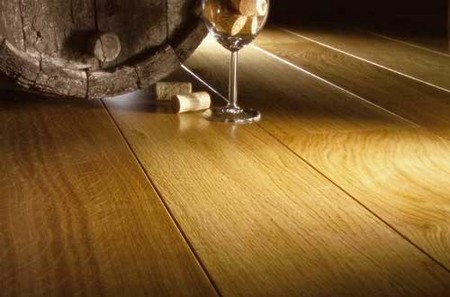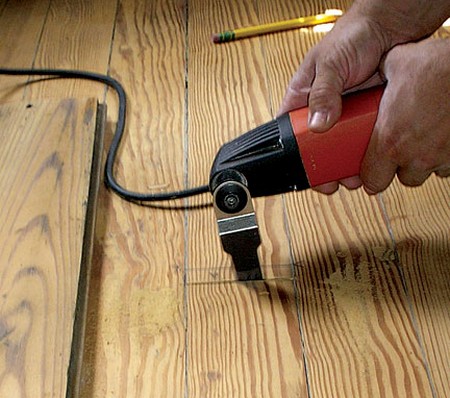Best Way to Replace and Repair Damaged Floorboard
Just as fashions in dress come and go in cycles, the same can be said for styles and trends in property and furnishings. The last few years have seen a slow but steady change from ‘must-have’ fitted carpets to expensive hardwood and cheaper laminate floors. However, by far the most popular choice is to use the existing original floorboards, which would normally have mellowed nicely in color and should have done most of the shrinking that they are going to do. There are some very important factors you should be aware of before you venture down this route.
Firstly, and probably most importantly, if you are choosing to expose your groundfloor boards, do remember that almost all wooden (board type) floors are suspended floors. This means that the floorboards are fixed (generally nailed) to a supporting framework of timber joists, which are in turn supported and suspended from the ground by small brick walls. Very importantly, these floors have air vents to the front and rear of the property to allow unhindered air circulation, which prevents infestation by woodworm, wet and dry rot, and so on.
Over a period of time as the sap in the floorboards dries out, the boards tend to shrink and gaps form in between the boards. In the winter it can be too much to bear with northerly winds whistling up your trouser legs! You may also find that you are constantly dusting the furniture as well. Floors on the upper levels are not normally affected in this way because they are closed-in floors and no ventilation is necessary.
If your property has had central heating fitted or been rewired or both, when you take up the carpets you might well find that the floorboards are a bit of a shambles. Most plumbers and electricians are motivated by speed to finish the job, so they tend to pay little respect to floorboards, particularly if they would appear to be hidden by other floor coverings. They rip up the boards cutting the wood where convenient, to suit themselves (often cutting two boards on the same joint), and breaking pieces off when lifting the boards.
Although this is really not a major problem under carpets, it certainly will be, once the boards are exposed!
Removing Damaged Floorboards
Carefully remove the skirtings that are fitted around the area of floorboards to be replaced or repaired. This will allow easier lifting of the boards.
Removing the first board is the most difficult. Carefully insert the nail bars on opposite sides of the board and central to the length (if necessary tap with a claw hammer) and lever the board upwards. Use wooden blocks for extra leverage – this will also help to prevent damage to the adjacent boards.
Repeat this process along the length of the wood. Starting at the middle will help spring each board away from the joists. Once the first board is removed, access is easier for the removal of all the others, using exactly the same technique.
Repairing And Replacing Boards
You can cut out any damaged sections in a square form to simplify a replacement. Carefully mark the board around the damaged section using a square. Use two wooden battens to keep the rogue board supported above the floor, allowing the damaged section to be cut out using a tenon saw.
Mark and cut a matching piece from another board. Cut the replacement section 2mm oversize, to ensure a tight fit with no gaps. Use a wooden block and hammer to tap the replacement section into position. Nail the new board in place. Smooth with a sander or by hand using sandpaper and a block.
To replace boards, remove all the old nails from the joists using the nail bars and claw hammer. Drill fine pilot holes in your new boards to prevent splitting and to locate and direct the position of the fixings. Stagger the cut boards to avoid two joints abutting side by side. Secure with floor brad nails.
Categories
Advertisements
Recent Articles
 How to Understand Bed Sizes – A Small Guide
How to Understand Bed Sizes – A Small Guide How to Select Some Must Have Kitchen Accessories
How to Select Some Must Have Kitchen Accessories Best Way to Change a Car Tire
Best Way to Change a Car Tire Best Way to Write an Affirmation
Best Way to Write an Affirmation Best Way to Take Charge of Your Financial Life
Best Way to Take Charge of Your Financial Life Best Way to Survive a Party When You Don’t Know Anyone
Best Way to Survive a Party When You Don’t Know Anyone Best Way to Stop Self Sabotaging Yourself
Best Way to Stop Self Sabotaging Yourself Best Way to Start Journal Writing
Best Way to Start Journal Writing Best Way to Speak with a Powerful Voice
Best Way to Speak with a Powerful Voice Best Way to Simplify Your Life
Best Way to Simplify Your Life Best Way to Respond to a Put-Down
Best Way to Respond to a Put-Down Best Way to Reduce Acne Breakouts
Best Way to Reduce Acne Breakouts Best Way to Recover from Dining Disasters
Best Way to Recover from Dining Disasters Best Way to Quit Your Job Gracefully
Best Way to Quit Your Job Gracefully Best Way to Make Your Own Website
Best Way to Make Your Own Website



Leave a Reply